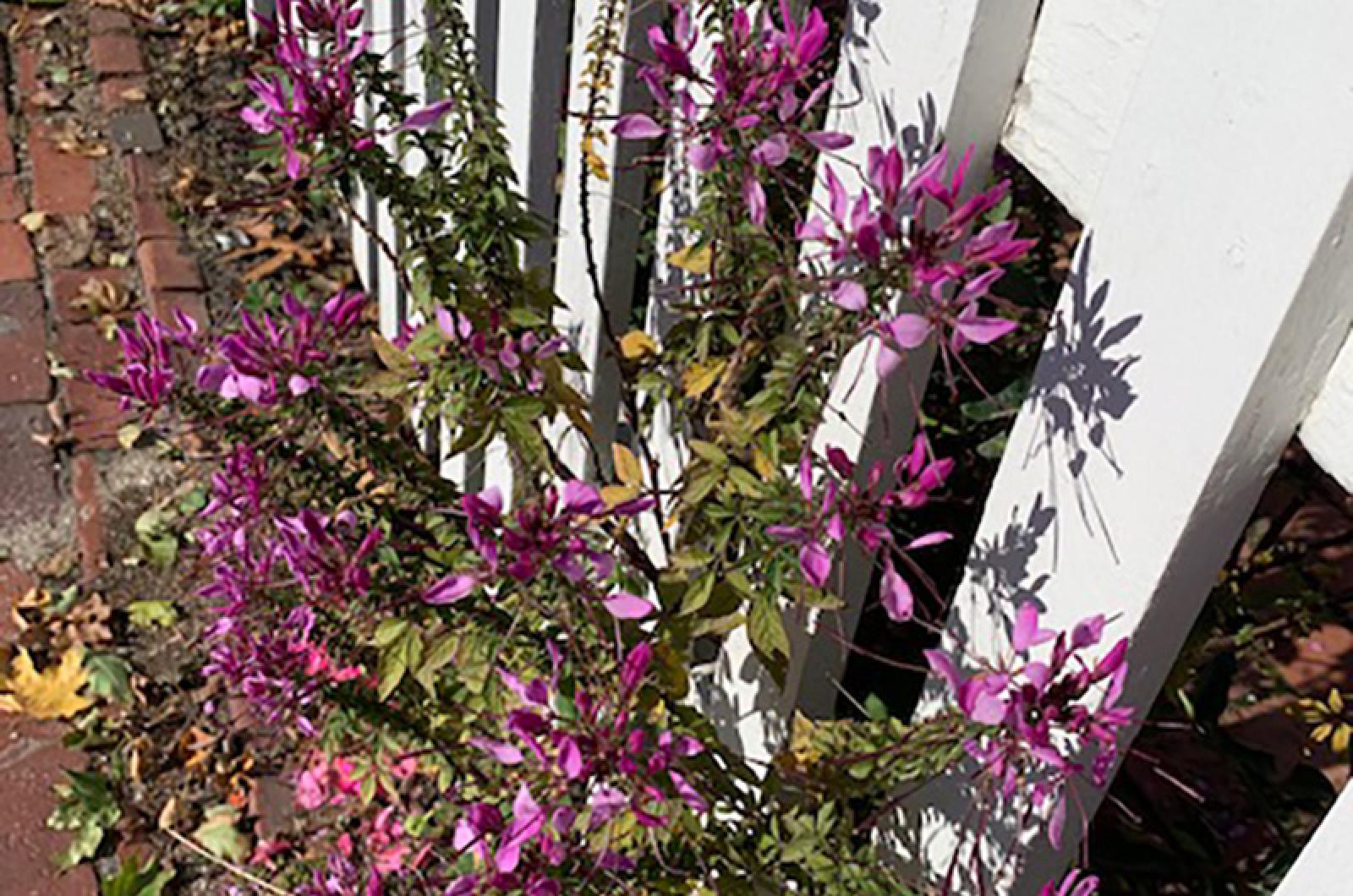Massachusetts native Joseph Breck got much right in his life.
Born in Medfield, Breck started out manufacturing carriage seats, but his horticultural hobby realigned his work and his life. Described as a “man with a dream and a passion for flowers,” Breck quickly changed careers from furniture to flora, moving on to edit agricultural publications, manage public gardens, write horticultural books, and start a business in Boston that would engage five generations of his family and remain a successful plant purveyor today.
What Breck got wrong, however, was his assessment of a particular flower. In his 1851 book, The Flower Garden, he writes of cleome: “This is an elegant tribe of plants and very curious in their structure... However beautiful and curious these plants may be, and desirable for show, they are repulsive to the smell and unpleasant to the touch, and, therefore, will not be favorites.”
Perhaps not a darling to all, cleome did have its proponents, and though its esteem might have waxed and waned, its persistent popularity belies Breck’s belief in its fleeting fancy.
Indigenous people used it before it was cool. Latecomers to this country took up its mantle and imported varieties of this plant from all over the world for inclusion in prominent gardens. Native Americans favored local species of cleome, while later household gardeners introduced nonnative versions brought from other parts of the world for its floral finery.
Navajo people called cleome “Waa” and employed this plant for food and medicine. Many parts of certain species are edible. The seeds could be consumed raw or cooked, ground into flour or made into oil, and the leaves, called Navajo spinach, were eaten fresh, dried or crushed into power.
Medicinally, stomach ailments, eye inflammation, and sore throats could be assailed. The plant was also used to make dye for baskets and rugs, paint for pottery and even as ingredients for soap, no matter what Breck said about its scent.
To be fair, as Breck insisted there
is a unsavory odor associated with cleome. Some have called it stinkweed due to glands on the leaves that produce a foul smell that will even deter deer and rabbits.
The scent did not dissuade everyone. Two men of governmental note chose to include cleome in their gardens. Ahead of Breck’s assessment, Thomas Jefferson grew these flowers in Monticello in the 1700s and George Washington planted them at Mount Vernon. Lewis and Clark, too, were intrigued, as cleome was one of the 178 plants collected during their western expedition.
Cleome’s popularity surged during Victorian times, often planted in pots or in cottage gardens. It is no wonder that one translation of the word cleome suggests that its meaning is “renown.” This flower has again become popular, as it is a good one for the pollinator gardens, inviting bees, hummingbirds, moths and other insects. Even the honey produced from bees drinking nectar from its bright pink, purple or white flower is renowned for its sweetness.
The look of the plant and its aliases speak to its unique visage. Spider plant, spider flower, spider legs, spider weed, grandfather’s whiskers, and cat’s whiskers pay homage to the long wispy stamens that stick out from each flower in the cluster.
With Halloween in the rearview mirror and even a few frosty overnights, cleome continues to creep leaved and in its blooming best in warmer parts of the Island. Its likeness to spiders and disguises are no longer its dominant source of interest. Rather, it is its dual nature — the host of beneficial uses wrapped in a malodorous bouquet — that have given it its remarkable staying power despite Joseph Breck’s gloomy prediction of obscurity.
Suzan Bellincampi is director of the Felix Neck Wildlife Sanctuary in Edgartown, and author of Martha’s Vineyard: A Field Guide to Island Nature and The Nature of Martha’s Vineyard.







Comments
Comment policy »